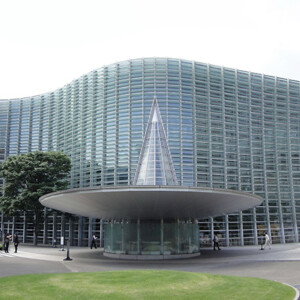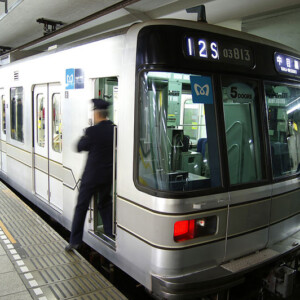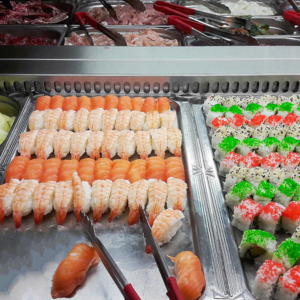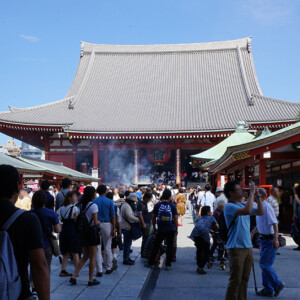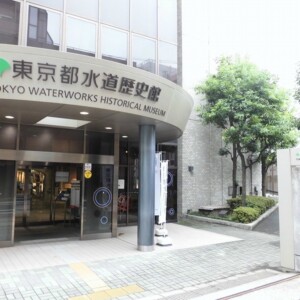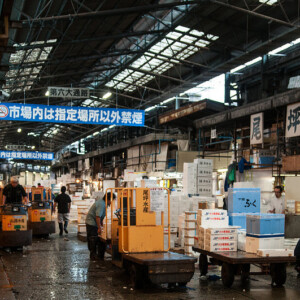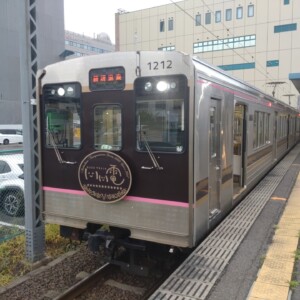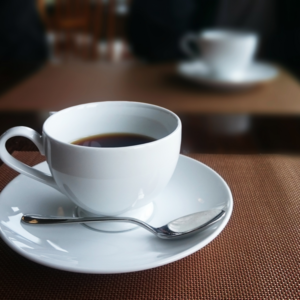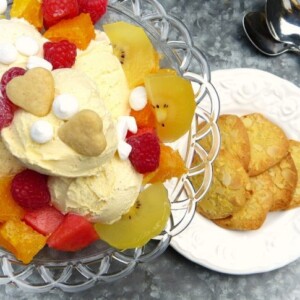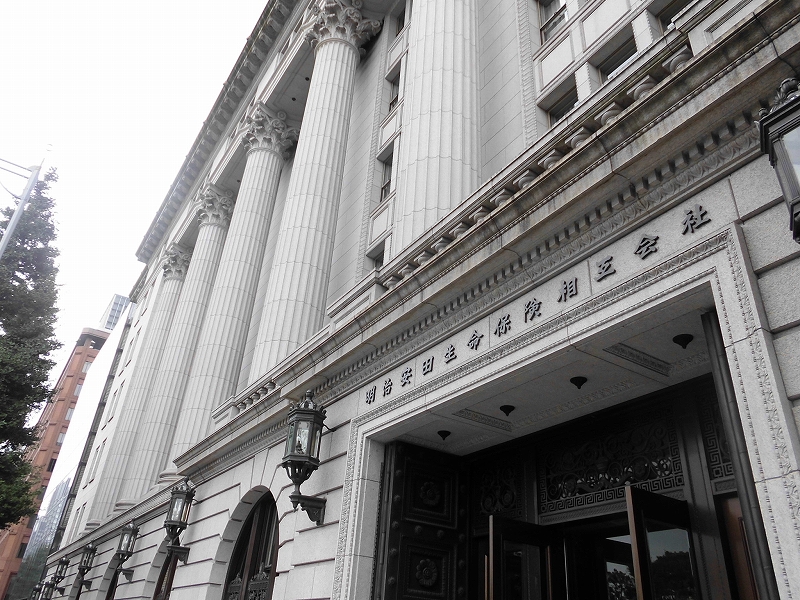
Visit the Meiji Seimei Museum, an important cultural property, in Marunouchi
table of contents
Meiji Seimei Museum, which was completed in 1934, was designated as a national important cultural property in 1997. This is the first time this has happened in a building built in the Showa era.
The building is still used as the headquarters of Meiji Yasuda Life Insurance, but it can only be visited on designated days and times. And it's free. Now, let's head out for a tour.
The tour starts from the second floor!
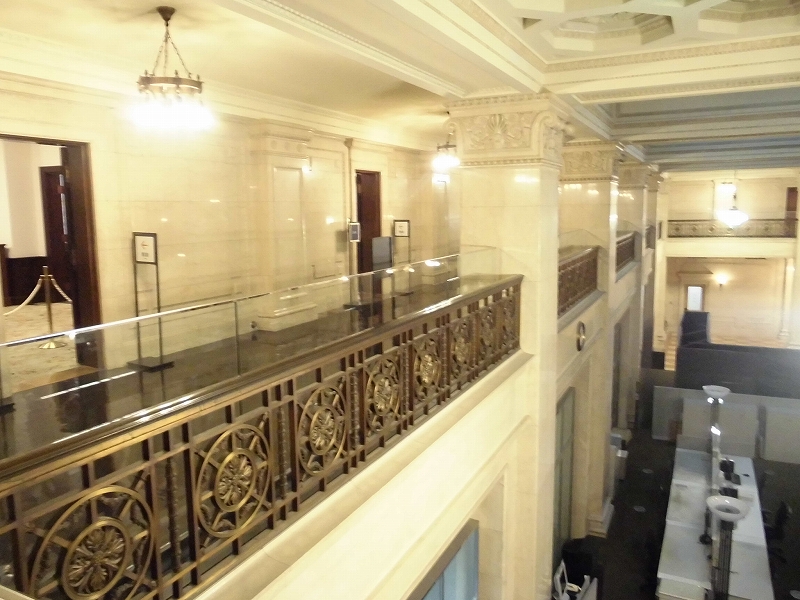
The visitor entrance to Meiji Seimei-kan faces Hibiya Street. The closest station is Nijubashi-mae Station on the Tokyo Metro Chiyoda Line. First, please pay attention to the exterior of Meiji Seimei-kan. The classical office building, lined with giant Corinthian columns, is a work of art.
As you pass through the visitor entrance, there will be a security guard. Tell them that you are going to take a tour, take the elevator to the second floor, and there will be a reception desk. After receiving the tour pamphlet here, we will take a look at the rooms in the atrium passageway on the second floor one by one.
Learn about the birth of Meiji Seimei Museum in the material exhibition room
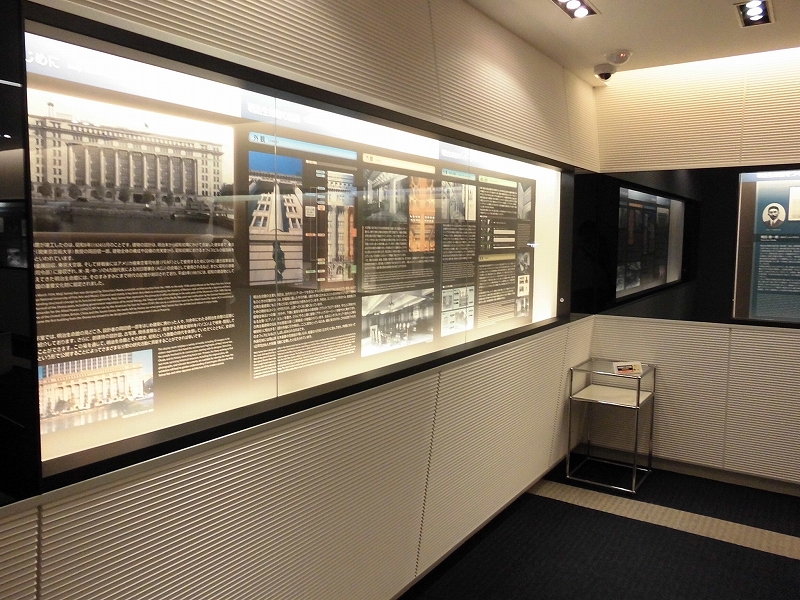
The materials and exhibition rooms offer more than 70 years of history. Meiji Seimeikan was laid grounds in September 1930 and completed on March 31, 1934.
After the war, it was taken over by the General Commander-in-Chief of the Allied Forces (GHQ) and used as the headquarters of the US Far Eastern Air Force. It was then returned in 1956 (Showa 31).
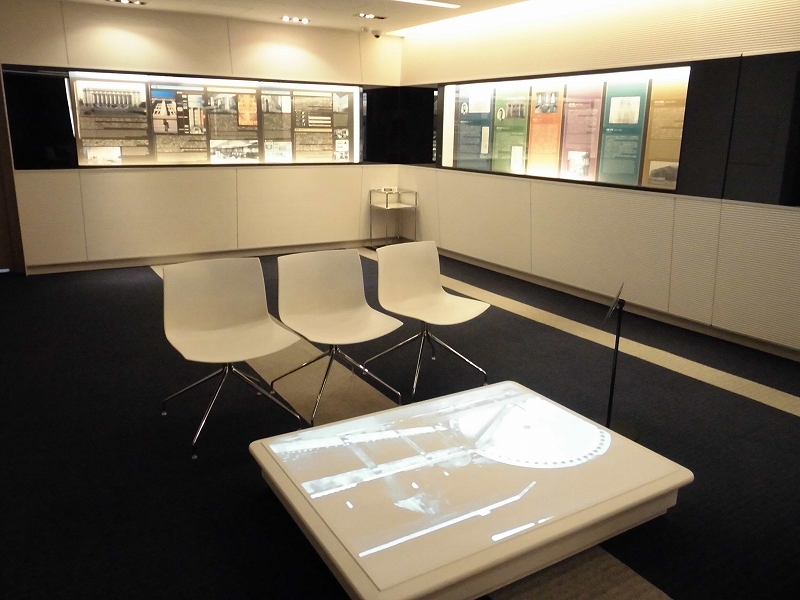
You can also sit on a chair and watch recorded footage under construction. At that time, there were no heavy construction equipment like today, so most of the construction work is carried out by hand. This is a valuable video that conveys the atmosphere of the times.
Take a closer look at the rooms on the second floor
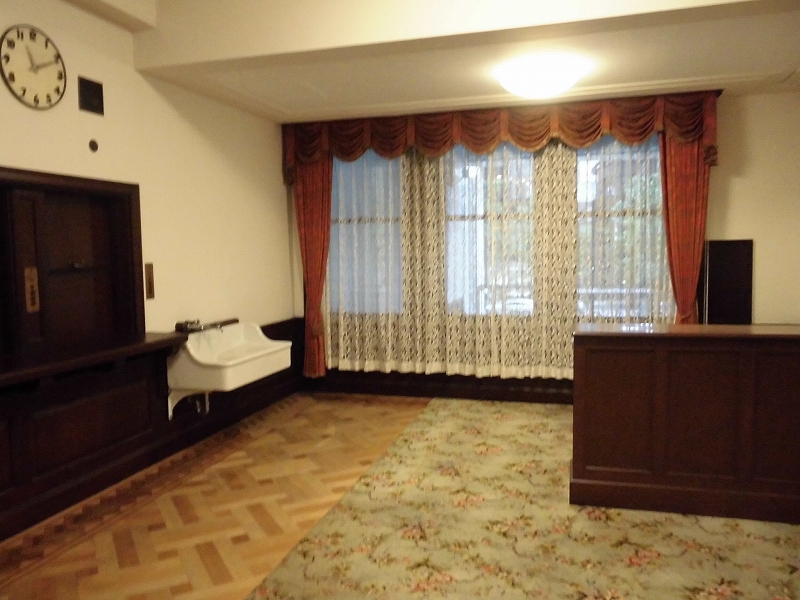
Under the clock on the left of the photo is an elevator that carries the food prepared in the kitchen. It is connected to the cafeteria outside the screen on the right.
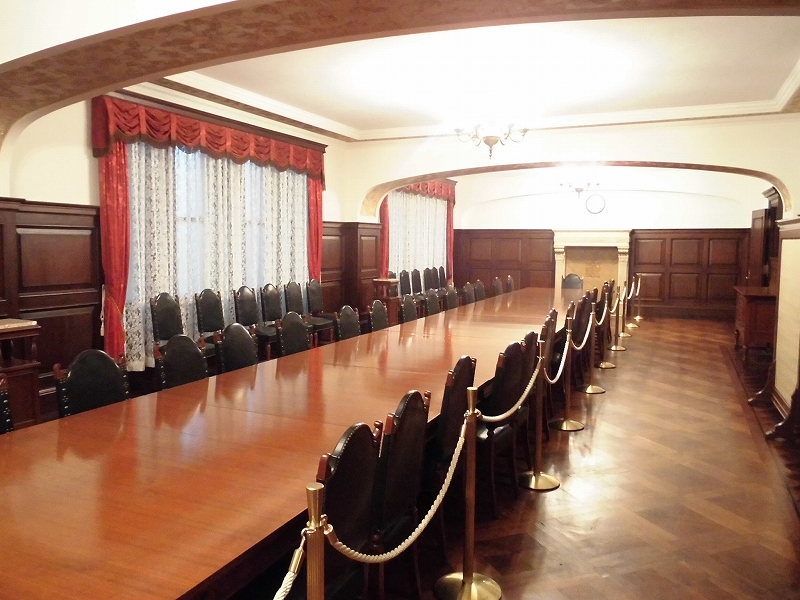
It's like a conference room, but it's a cafeteria. The ceiling and beams feature reliefs of grapes and ivy made from plaster.
It's hard to see, but the relief is the slightly dim section of the beam at the top of the photo. The hollow at the back of the table is a fireplace.
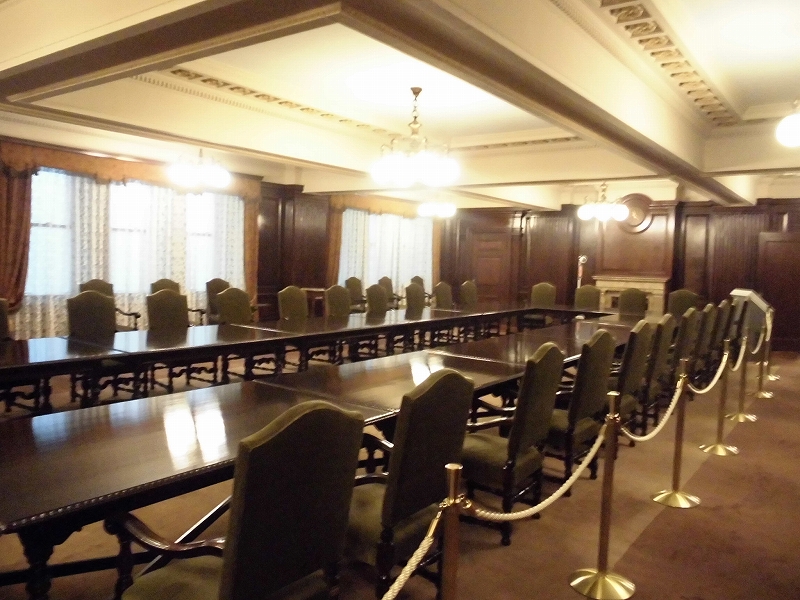
While the GHQ was seized, a board meeting to Japan was held in this conference room with representatives from four countries: the US, UK, China and the Soviet Union. The first event was April 5th, 1946, and until 1952, it was held 164 times, once every two weeks.
At the first meeting, MacArthur, the commander-in-chief of the Allies, gave a speech. It is truly a conference room that can be called a historical heritage.
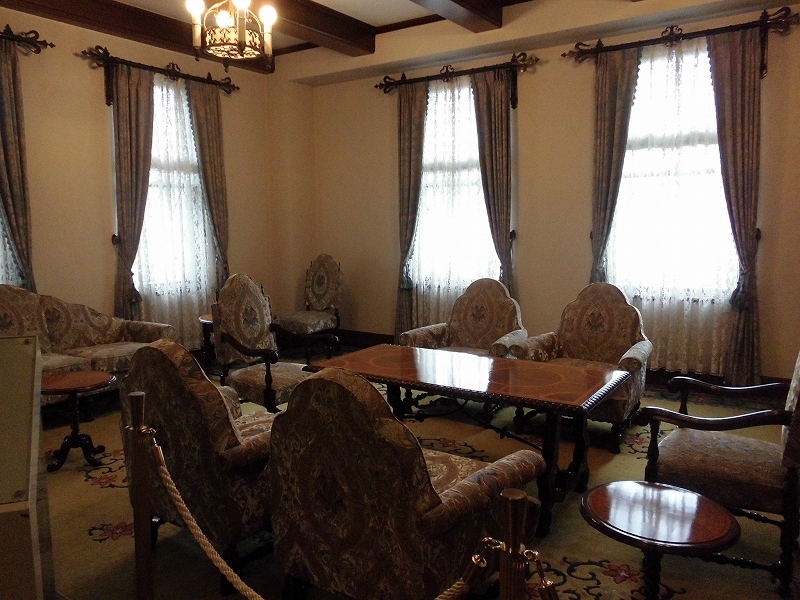
The waiting room is next to the meeting room.
While the meeting rooms have a functional atmosphere, this room has a relaxed atmosphere. The waiting room gives a sense of private space, in contrast to the official meeting room.

It is the first floor, overlooking the second floor aisle. The large pillars and walls are mainly made of Italian marble.
The five-story Meiji Life Insurance building is still used as the headquarters of Meiji Yasuda Life Insurance, and the first floor is open as the Marunouchi Customer Service Center.
In addition, in the atrium on the second floor, there are an office, three reception rooms, and a health consultation room, all preserved in their original condition.
The first floor is still used as an office.
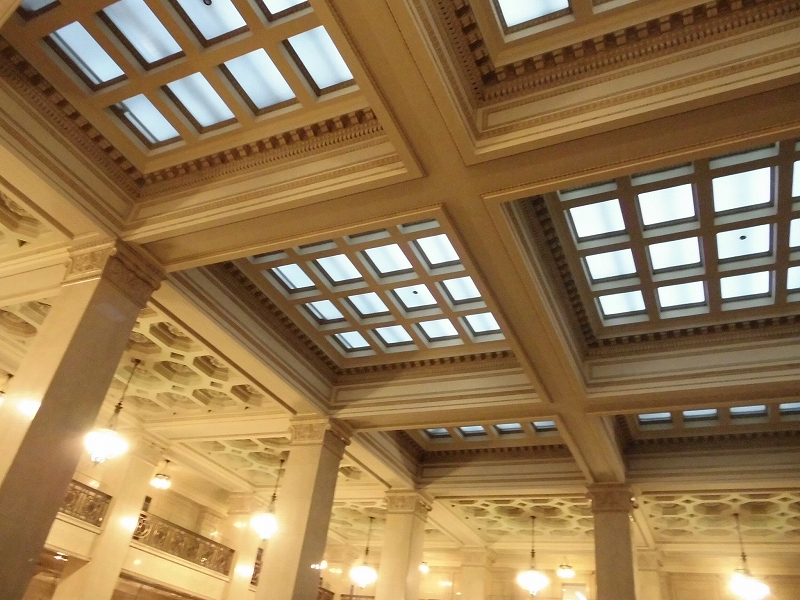
Looking up at the ceiling on the 1st to 2nd floors of the atrium, you can see that the center is covered in glass, and on nice weather, light comes in. Around it is a circle of octagonal depressions called coffarings, and inside the depressions there are also flower-shaped decorations called rosettes.
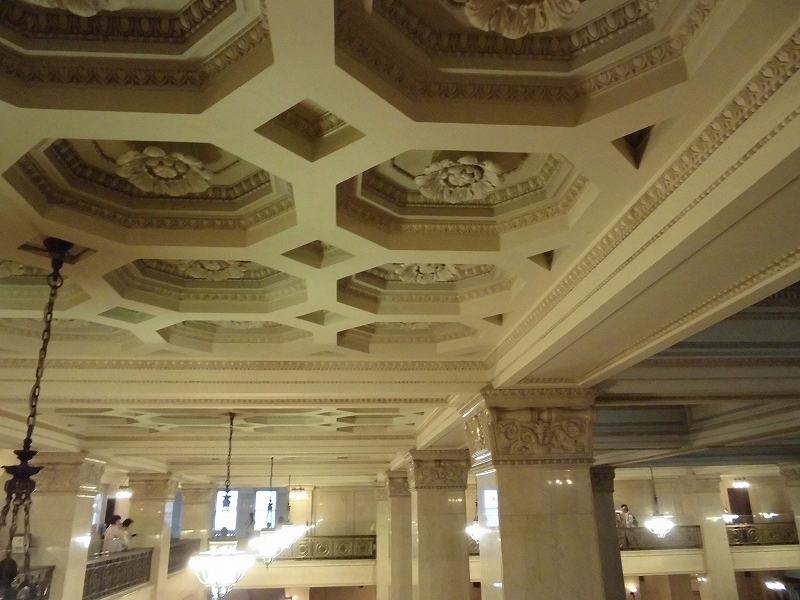
In this photo, you can clearly see the reliefs of flowers carved into every cavity.
Looking up at the ceiling from the atrium on the second floor, you can clearly see the details. Whether you look up from the first floor or from the second floor, you can see the majestic, almost like you're in a temple.
Tours of the first floor are only available on Saturdays and Sundays, so we recommend visiting on Saturdays and Sundays.
Let's also take a walk around the Mitsubishi Daiichi Building next door.
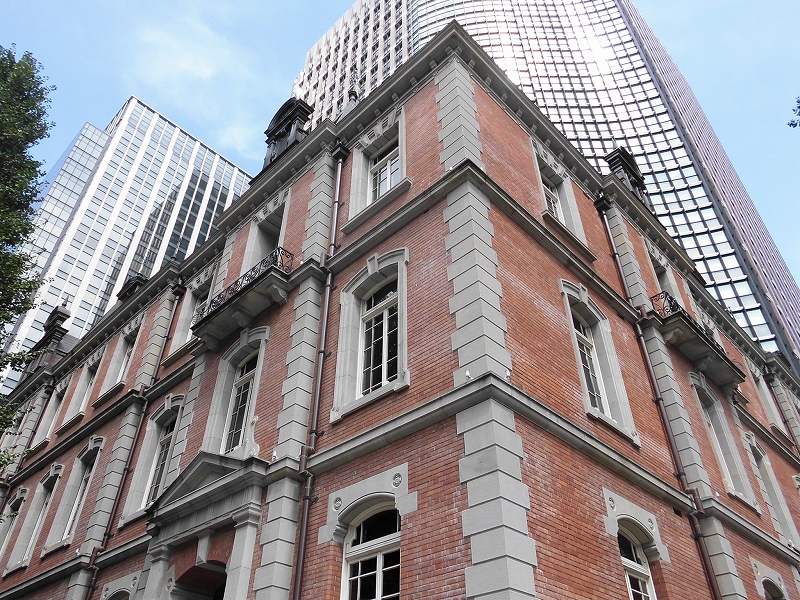
If you have the opportunity, let's also go to the Mitsubishi Building No. 1, which is located across Marunouchi Nakadori from the Meiji Seimei Museum.
Mitsubishi Ichigokan is a Mitsubishi office building designed by Josiah Condor in 1894 (Meiji 27). It was dismantled in 1968 (Showa 43) due to its aging, but in 2010 it was rebuilt as the Mitsubishi Ichigokan Museum using blueprints, materials and materials stored at the time.
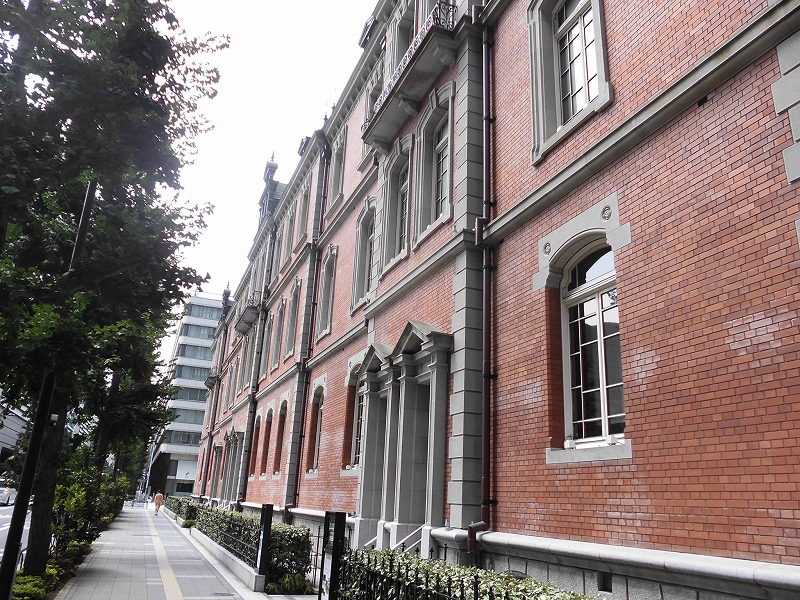
From Meiji Seimeikan, walk along Babasa-dori towards Tokyo Station and you will find a red brick building on the street. This is the exterior of the Mitsubishi Ichigokan Museum.
The design is the Queen Anne style that was popular in England in the second half of the 19th century. It feels like walking around London.
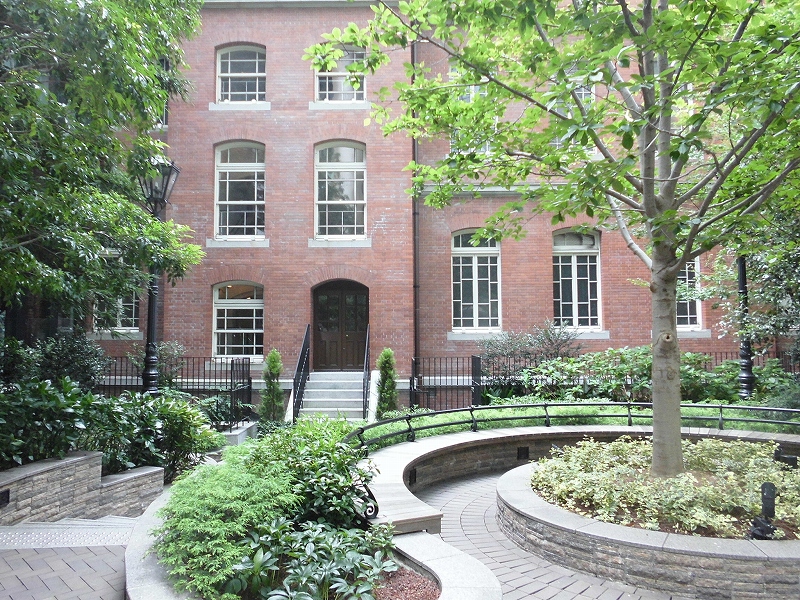
In the courtyard there are many benches around the shade of the trees, so you can rest comfortably. Cafes and restaurants are also arranged in a way that surrounds the courtyard.
What did you think?
Meiji Seimei Museum is a nationally important cultural property. What's more, you can tour for free. We recommend visiting on Saturdays and Sundays, when you can tour both the 1st and 2nd floors. Even if you're not interested in architecture or history, you're sure to have a great time.
INFORMATION
| name | Meiji Seimei Museum |
| location | 2-1-1 Marunouchi, Chiyoda-ku, Tokyo |
| telephone number | 03-3283-9252 |
| Official URL | http://www.meijiyasuda.co.jp/meiji_seimeikan/ |
| GOOGLE MAP |
INFORMATION
| name | Mitsubishi Ichigokan Art Room |
| location | 2-6-2 Marunouchi, Chiyoda-ku, Tokyo |
| telephone number | 03-5777-8600 |
| Official URL | http://mimt.jp/ |
| GOOGLE MAP |



